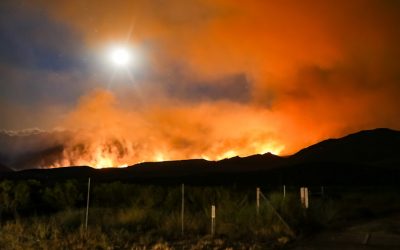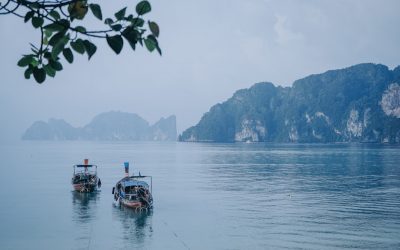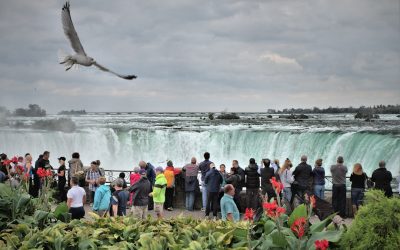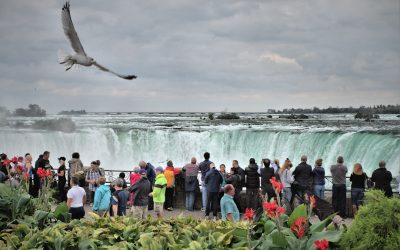World Geography
Geography is the study of the Earth’s landscapes, environments, and the relationships between people and their surroundings. It encompasses both the physical aspects of the Earth, such as its landforms, bodies of water, and climate, as well as the human aspects, including population distribution, cultures, and economies. World geography is a broad field that seeks to understand the complexities of our planet and how humans interact with it. By studying world geography, we can gain a deeper appreciation for the diversity of our planet and the interconnectedness of its various regions.
Geography is a multidisciplinary field that draws on elements of physical science, social science, and humanities. It involves the use of maps, spatial analysis, and geographic information systems (GIS) to understand the Earth’s surface and the processes that shape it. World geography also encompasses the study of human geography, which examines the ways in which people and their activities are distributed across the Earth. By understanding world geography, we can better appreciate the environmental, cultural, and economic challenges facing different regions of the world. This knowledge is crucial for addressing global issues such as climate change, resource management, and international development.
The Five Oceans and Seven Continents
The Earth’s surface is divided into five major oceans: the Pacific, Atlantic, Indian, Southern (or Antarctic), and Arctic Oceans. These vast bodies of water play a crucial role in regulating the Earth’s climate and supporting diverse marine ecosystems. The oceans also serve as important transportation routes and a source of food and other natural resources for human societies around the world.
In addition to the oceans, the Earth’s landmasses are divided into seven continents: Africa, Antarctica, Asia, Europe, North America, Australia (or Oceania), and South America. Each continent has its own unique physical and cultural characteristics, shaped by millions of years of geological processes and human history. From the deserts of Africa to the rainforests of South America, the continents offer a rich tapestry of landscapes and environments for exploration and study.
Major Mountain Ranges and Deserts
The Earth’s surface is also marked by major mountain ranges and deserts that have shaped the planet’s physical and cultural landscapes. The Himalayas, for example, are the highest mountain range in the world and are home to diverse ecosystems and cultures in countries such as India, Nepal, and Bhutan. The Andes in South America, the Rockies in North America, and the Alps in Europe are other prominent mountain ranges that have influenced human settlement patterns and economic activities.
Deserts cover about one-third of the Earth’s land surface and are characterized by low precipitation and extreme temperatures. The Sahara Desert in Africa is the largest hot desert in the world, while the Gobi Desert in Asia is one of the largest cold deserts. Deserts are not only home to unique flora and fauna but have also been important trade routes and cultural crossroads throughout history.
Climate Zones and Biomes
The Earth’s climate is influenced by a variety of factors, including latitude, altitude, ocean currents, and prevailing winds. As a result, the planet is divided into different climate zones, each with its own characteristic weather patterns and ecosystems. The equator, for example, experiences a tropical climate with high temperatures and heavy rainfall, while the polar regions have a cold and dry climate.
These climate zones give rise to different biomes, or large ecological areas characterized by distinct plant and animal communities. The tropical rainforest biome, found near the equator, is home to a diverse array of species and is vital for regulating the Earth’s climate. The grasslands biome, found in regions such as the African savannah and North American prairies, supports grazing animals and has been important for human agriculture throughout history.
Human Geography and Population Distribution
Human geography examines the ways in which people and their activities are distributed across the Earth’s surface. It encompasses topics such as population growth, migration patterns, urbanization, and cultural diversity. Understanding human geography is crucial for addressing global challenges such as poverty, inequality, and environmental degradation.
Population distribution is uneven across the world, with some regions experiencing rapid population growth while others are declining. The majority of the world’s population lives in Asia, particularly in countries such as China and India. Urban areas are also growing rapidly, with more than half of the world’s population now living in cities. This trend has significant implications for infrastructure development, resource management, and social inequality.
Historical and Cultural Geography
Historical geography examines how human activities have shaped the Earth’s landscapes over time. It explores topics such as colonialism, trade routes, and the rise and fall of empires. Cultural geography focuses on how human cultures have developed in different regions of the world and how they interact with their environments.
The Silk Road, for example, was an ancient trade route that connected China with Europe and facilitated the exchange of goods, ideas, and technologies across Eurasia. This historical trade route had a profound impact on the development of cultures and economies along its path. Similarly, cultural geographers study how different societies have adapted to their environments through practices such as agriculture, architecture, and religious beliefs.
The Importance of Geographic Knowledge
Geographic knowledge is crucial for addressing global challenges such as climate change, resource management, and international development. By understanding world geography, we can better appreciate the environmental, cultural, and economic challenges facing different regions of the world. This knowledge is crucial for addressing global issues such as climate change, resource management, and international development.
Geographic knowledge also helps us to understand our interconnectedness with other regions of the world. By studying world geography, we can gain a deeper appreciation for the diversity of our planet and the interconnectedness of its various regions. This understanding can foster a sense of global citizenship and empathy for people from different cultures and backgrounds.
In conclusion, world geography is a complex and multifaceted field that encompasses both physical and human aspects of the Earth’s landscapes. By studying world geography, we can gain a deeper appreciation for the diversity of our planet and the interconnectedness of its various regions. This knowledge is crucial for addressing global challenges such as climate change, resource management, and international development. It also helps us to understand our interconnectedness with other regions of the world and fosters a sense of global citizenship.
FAQs
What is world geography?
World geography is the study of the Earth’s landscapes, environments, and the relationships between people and their environments. It encompasses the physical features of the Earth, as well as the human activity that takes place on it.
Why is world geography important?
World geography is important because it helps us understand the world around us. It provides insights into the physical and human processes that shape our planet, and helps us make informed decisions about how to interact with our environment.
What are the main branches of world geography?
The main branches of world geography include physical geography, which focuses on the Earth’s natural features and processes, and human geography, which examines the relationships between people and their environments.
How does world geography impact our daily lives?
World geography impacts our daily lives in numerous ways, from influencing the weather and climate we experience, to shaping the availability of natural resources and influencing the distribution of populations and cultures around the world.
What are some key concepts in world geography?
Key concepts in world geography include location, place, human-environment interaction, movement, and region. These concepts help geographers understand and interpret the world around them.
State of South Carolina
South Carolina, located in the southeastern United States, has a rich history and diverse geography. The state was first settled by Europeans in the 16th century and played a significant role in the American Revolution. South Carolina was also one of the first states to secede from the Union during the Civil War. Today, it is known for its beautiful coastline, historic cities, and vibrant culture. Geographically, South Carolina is divided into three distinct regions: the Upstate, the Midlands, and the Lowcountry. The Upstate is characterized by its rolling hills and mountains, including the famous Blue Ridge Mountains. The Midlands region is a mix of forests and farmland, while the Lowcountry is known for its marshes, rivers, and barrier islands. The climate in South Carolina is generally mild, with hot summers and mild winters. The state experiences a significant amount of rainfall throughout the year, particularly during the summer months. This climate is ideal for agriculture and contributes to the state’s diverse natural beauty. Summary South Carolina has a rich history and diverse geography, from the Blue Ridge Mountains to the Atlantic Coastline. The state is home to natural wonders, cultural heritage, and a famous food scene, including Lowcountry cuisine and barbecue. Visitors can explore historic Charleston, Myrtle Beach, and Hilton Head Island, and enjoy sports and recreation like golf, fishing, and hunting. South Carolina’s economy is driven by agriculture, manufacturing, and tourism, and the state offers education from kindergarten to higher learning institutions. Living in South Carolina offers a relatively low cost of living, affordable housing, and a high quality of life. Discovering South Carolina’s Natural Wonders:...
Rhode Island
Rhode Island, located in the New England region of the United States, is the smallest state in the country. Despite its small size, Rhode Island is packed with history, natural beauty, and a vibrant culture. It is bordered by Connecticut to the west, Massachusetts to the north and east, and the Atlantic Ocean to the south. With a total area of just 1,214 square miles, Rhode Island may be small, but it offers a wealth of attractions and activities for visitors. Fun facts about Rhode Island include its nickname as the “Ocean State” due to its extensive coastline and maritime history. It is also known for being home to the Tennis Hall of Fame and the oldest operating carousel in the United States. Rhode Island was one of the original 13 colonies and played a significant role in the American Revolution. Today, it is known for its beautiful beaches, charming coastal towns, and thriving arts scene. Summary Rhode Island is the smallest state in the USA, but it has a rich history and diverse culture. From colonial times to modern day, Rhode Island has played an important role in American history. Rhode Island’s natural beauty includes beaches, parks, and wildlife, making it a great destination for outdoor enthusiasts. The state’s art and culture scene is also thriving, with museums, galleries, and festivals showcasing local talent. Rhode Island is famous for its seafood cuisine, but it also offers great shopping destinations, sports and recreation opportunities, and top-notch universities. Rhode Island’s Rich History: From Colonial Times to Modern Day Rhode Island has a rich history that dates back to colonial times....
Pennsylvania
Pennsylvania, also known as the Keystone State, is a state located in the northeastern and Mid-Atlantic regions of the United States. It is bordered by Delaware to the southeast, Maryland to the south, West Virginia to the southwest, Ohio to the west, Lake Erie and the Canadian province of Ontario to the northwest, New York to the north, and New Jersey to the east. Pennsylvania is known for its rich history, diverse geography, and vibrant culture. The nickname “Keystone State” comes from Pennsylvania’s central location among the original Thirteen Colonies. Just as a keystone is the central stone that holds an arch together, Pennsylvania was seen as a key state in holding the newly formed United States together. The state played a crucial role in the American Revolution and has been an important center of industry and commerce throughout its history. Summary Pennsylvania is known as the Keystone State due to its central location and role in early American history. William Penn founded Pennsylvania as a haven for religious freedom and tolerance in the late 17th century. Pennsylvania’s geography is characterized by its mountain ranges, rivers, and fertile valleys. The state experiences all four seasons, with hot summers and cold winters. Pennsylvania’s economy is diverse, with a strong presence in agriculture, manufacturing, and services. History of Pennsylvania: From William Penn to the American Revolution Pennsylvania has a rich colonial history that dates back to the early 17th century. The area was originally inhabited by Native American tribes such as the Lenape and Susquehannock. In 1681, King Charles II of England granted a charter to William Penn, a Quaker, to...
Oregon
Oregon, located in the Pacific Northwest region of the United States, is a state known for its stunning natural landscapes, vibrant cities, and commitment to sustainable living. Bordered by Washington to the north, California to the south, Idaho to the east, and the Pacific Ocean to the west, Oregon offers a diverse range of geographical features, including mountains, forests, and coastlines. With its mild climate and abundant rainfall, Oregon is often referred to as “The Pacific Wonderland.” Summary Oregon offers a diverse range of natural wonders, from mountains and forests to coastlines and lakes. The state has a rich history, with a focus on Native American culture and modern-day innovations. Oregon’s food and drink scene is thriving, with a farm-to-table ethos and a craft beer culture. The state is home to a vibrant art and culture scene, with museums, galleries, and festivals to explore. Outdoor adventure is a must in Oregon, with hiking, biking, rafting, and more available throughout the state. Exploring Oregon’s Natural Wonders: Mountains, Forests, and Coastlines One of the main attractions of Oregon is its diverse natural landscapes. From towering mountains to lush forests and picturesque coastlines, there is something for everyone to enjoy. One of the most famous natural wonders in Oregon is Crater Lake. Formed by the collapse of a volcano thousands of years ago, Crater Lake is known for its deep blue color and stunning clarity. Visitors can hike along the rim of the lake or take a boat tour to fully appreciate its beauty. Another popular natural attraction in Oregon is Mount Hood. As the highest peak in the state, Mount Hood...
Oklahoma
Oklahoma, also known as the Sooner State, is a state located in the South Central region of the United States. It is bordered by Kansas to the north, Missouri to the northeast, Arkansas to the east, Texas to the south and west, and New Mexico to the west. Oklahoma has a rich history and diverse culture that has shaped its identity and contributed to its importance in the United States. Summary Oklahoma is known as The Sooner State and is located in the southern central region of the United States. The state has a diverse geography and climate, ranging from plains and prairies to mountains and forests, with hot summers and cold winters. Oklahoma has a rich history, including Native American tribes, the Dust Bowl, and the oil boom of the early 20th century. The state has a diverse culture and traditions, with influences from Native American, African American, and European American communities. Oklahoma’s economy is driven by industries such as oil and gas, agriculture, aerospace, and manufacturing. The education system in Oklahoma includes public and private schools, as well as colleges and universities. Tourist attractions in Oklahoma include natural wonders such as the Wichita Mountains and the Great Salt Plains, as well as cultural sites like the National Cowboy and Western Heritage Museum. Sports and recreation opportunities in Oklahoma include college football, basketball, and baseball, as well as outdoor activities like hiking, fishing, and hunting. Famous personalities from Oklahoma include Will Rogers, Woody Guthrie, and Blake Shelton. Future prospects and challenges for Oklahoma include diversifying the economy, improving education outcomes, and addressing issues such as poverty and healthcare...
Ohio
Ohio, located in the Midwestern region of the United States, is often referred to as the “Heart of America” due to its central location and historical significance. Bordered by Lake Erie to the north and the Ohio River to the south, Ohio is known for its diverse landscapes, vibrant cities, and rich history. With a population of over 11 million people, Ohio is the seventh most populous state in the country. Summary Ohio is located in the heart of America and has a rich history dating back to Native American settlements. The state is home to beautiful natural wonders, including the Hocking Hills and Lake Erie. Ohio’s cities, such as Cleveland and Cincinnati, offer vibrant cultural experiences and unique attractions. The state’s food, music, art, and festivals showcase its unique culture and heritage. Ohio is a sports lover’s paradise, with top college and professional teams and a thriving sports scene. Ohio’s Rich History: From Native American Settlements to Modern Times Ohio has a rich and diverse history that dates back thousands of years. Before European colonization, the area that is now Ohio was home to various Native American tribes, including the Shawnee, Miami, and Delaware. These tribes lived off the land and established settlements along rivers and lakes. In the late 17th century, European settlers began to arrive in Ohio, primarily from France and England. The French established trading posts and forts throughout the region, while the English claimed control over the area after winning the French and Indian War in 1763. During the American Revolution, Ohio played a significant role as a battleground between Native American tribes allied...
North Dakota
North Dakota, located in the Midwestern region of the United States, is a state known for its diversity and rich history. With a population of approximately 760,000 people, it is the 47th most populous state in the country. The state’s history dates back thousands of years, with evidence of Native American settlements dating back to 11,000 BC. European explorers arrived in the area in the 18th century, and North Dakota became a territory in 1861 before achieving statehood in 1889. North Dakota is home to a variety of unique features and attractions that make it a popular destination for tourists. The state is known for its wide open spaces and stunning natural beauty. From the rolling hills of the Great Plains to the rugged beauty of the Badlands, North Dakota offers a diverse landscape that is perfect for outdoor enthusiasts. The Missouri River, which runs through the state, provides opportunities for boating, fishing, and other water activities. Summary North Dakota is a state with a rich history and diverse culture. The state boasts a range of geographical features, from the Great Plains to the Badlands. North Dakota’s economy is driven by agriculture, energy, and other industries. The state’s cultural heritage is a blend of Native American traditions and Western influences. Outdoor enthusiasts will find plenty to explore in North Dakota’s national and state parks. Geographical Features of North Dakota: From the Great Plains to the Badlands North Dakota’s geographical features are as diverse as its history. The state is primarily located in the Great Plains region, which is characterized by its flat terrain and fertile soil. The Great Plains...
North Carolina
North Carolina, located in the southeastern region of the United States, is a state with a rich history and vibrant culture. It is known for its southern charm, hospitality, and diverse landscapes. From the majestic Blue Ridge Mountains in the west to the beautiful coastline in the east, North Carolina offers a wide range of experiences for visitors and residents alike. The history of North Carolina dates back to the early colonial period, when it was one of the original 13 colonies. It played a significant role in the American Revolution and was also a major battleground during the Civil War. Today, North Carolina is home to many historical sites and museums that showcase its rich heritage. In terms of culture, North Carolina is known for its traditional southern values and strong sense of community. The state has a thriving arts scene, with numerous galleries, theaters, and music venues. It is also famous for its cuisine, which includes delicious barbecue, fresh seafood, and classic southern comfort food. Summary North Carolina is a southern state with a rich history and culture. The state has diverse geography and climate, ranging from mountains to the coast. North Carolina boasts national parks and wildlife, making it a great destination for nature lovers. The state’s economy is driven by agriculture, manufacturing, and technology. North Carolina is home to top universities and schools, making it a great place for education. Geography and Climate of North Carolina: From the Mountains to the Coast North Carolina’s geography is diverse and varied, with three distinct regions: the mountains in the west, the Piedmont plateau in the central part...
New York
New York City, often referred to as the “Big Apple,” is one of the most iconic and vibrant cities in the world. Located in the northeastern United States, it is the largest city in the country and serves as a major cultural, financial, and commercial hub. With its towering skyscrapers, bustling streets, and diverse population, New York City is a city like no other. Summary New York City is a vibrant and diverse metropolis with a rich history and culture. The city’s history includes periods of Dutch and British colonization, as well as waves of immigration that have shaped its character. New York City is known for its arts and entertainment scene, including Broadway shows, museums, and music venues. The food scene in New York City is diverse and world-renowned, with options ranging from street food to high-end restaurants. The architecture of New York City is iconic, with landmarks such as the Empire State Building and the Statue of Liberty. The History of New York City New York City has a rich and fascinating history that dates back to its founding in 1624 by Dutch colonists. Originally known as New Amsterdam, the city was later renamed New York after the English took control in 1664. Throughout its history, New York City has been shaped by a series of key events and figures. One of the most significant events in the city’s history was the arrival of millions of immigrants in the late 19th and early 20th centuries. These immigrants, who came from all over the world, helped to shape the city’s cultural landscape and make it the diverse melting...
New Mexico
New Mexico, also known as the Land of Enchantment, is a state in the southwestern region of the United States. It is a popular travel destination for its diverse attractions and unique culture. From its rich Native American and Hispanic heritage to its stunning natural landscapes, New Mexico offers something for every type of traveler. Summary New Mexico is a land of enchantment with a rich cultural heritage, natural wonders, unique cuisine, art and architecture, fascinating history, and a thriving economy. The state’s cultural heritage is a blend of Native American, Spanish, and Mexican influences, reflected in its art, architecture, and cuisine. Natural wonders in New Mexico include the Carlsbad Caverns, White Sands National Monument, and the Rio Grande Gorge. The best places to visit in New Mexico include Santa Fe, Taos, Albuquerque, and Roswell. New Mexico’s unique cuisine features dishes like green chile stew, enchiladas, and sopapillas. The Rich Cultural Heritage of New Mexico One of the most fascinating aspects of New Mexico is its rich cultural heritage. The state is home to a large Native American population, with 23 different tribes residing within its borders. These tribes have a deep connection to the land and have preserved their traditions and customs for centuries. In addition to the Native American influence, New Mexico also has a strong Hispanic heritage. The state was once part of Mexico before becoming a territory of the United States, and this history is still evident in its architecture, cuisine, and language. Traditional arts and crafts are an important part of New Mexico’s cultural heritage. The state is known for its pottery, weaving, and...
New Jersey
New Jersey, also known as the Garden State, is a state located in the northeastern part of the United States. It is bordered by New York to the north and east, Pennsylvania to the west, and Delaware to the southwest. With a population of over 9 million people, it is the 11th most populous state in the country. Despite its small size, New Jersey is known for its diverse landscapes, vibrant culture, and rich history. The nickname “Garden State” originated in the 19th century when New Jersey was known for its agricultural industry. The state’s fertile soil and moderate climate made it ideal for farming, and it became a major producer of fruits and vegetables. Today, while New Jersey is no longer primarily an agricultural state, the nickname still reflects its commitment to preserving green spaces and promoting environmental sustainability. Summary New Jersey is known as the Garden State and is located on the east coast of the United States. The state has a rich history and culture, including being the birthplace of Frank Sinatra and the site of the first organized baseball game. Top tourist attractions in New Jersey include the Atlantic City Boardwalk, Liberty State Park, and the Cape May Lighthouse. Some of the best beaches in New Jersey include Ocean City, Wildwood, and Cape May. Exploring the great outdoors in New Jersey can include hiking in the Delaware Water Gap, skiing in the Pocono Mountains, and visiting the Great Swamp National Wildlife Refuge. History and Culture of New Jersey New Jersey has a rich history that dates back to before European colonization. The area was originally...
New Hampshire
New Hampshire, also known as the Granite State, is a small but significant state located in the New England region of the United States. It is bordered by Massachusetts to the south, Vermont to the west, Maine and the Atlantic Ocean to the east, and Canada to the north. Despite its small size, New Hampshire has played a significant role in American history and continues to be a popular destination for tourists and those seeking a high quality of life. The nickname “The Granite State” comes from the abundance of granite rock formations found throughout the state. In fact, New Hampshire is known for having some of the largest granite quarries in the world. This granite has been used in many famous structures, including the Library of Congress and the Statue of Liberty. New Hampshire also holds a special place in American history. It was one of the original thirteen colonies and played a crucial role in the American Revolution. The state’s motto, “Live Free or Die,” reflects its independent spirit and commitment to individual liberty. Summary New Hampshire is known as the Granite State due to its abundance of granite rock formations. New Hampshire was one of the original 13 colonies and became a state in 1788. The state is home to the White Mountains, Lake Winnipesaukee, and the White Mountain National Forest. New Hampshire experiences all four seasons, with warm summers and cold winters. The state’s economy is driven by agriculture, manufacturing, and tourism, with top-ranked schools and universities. History of New Hampshire: From Colonization to Statehood New Hampshire was first settled by Europeans in the early...











